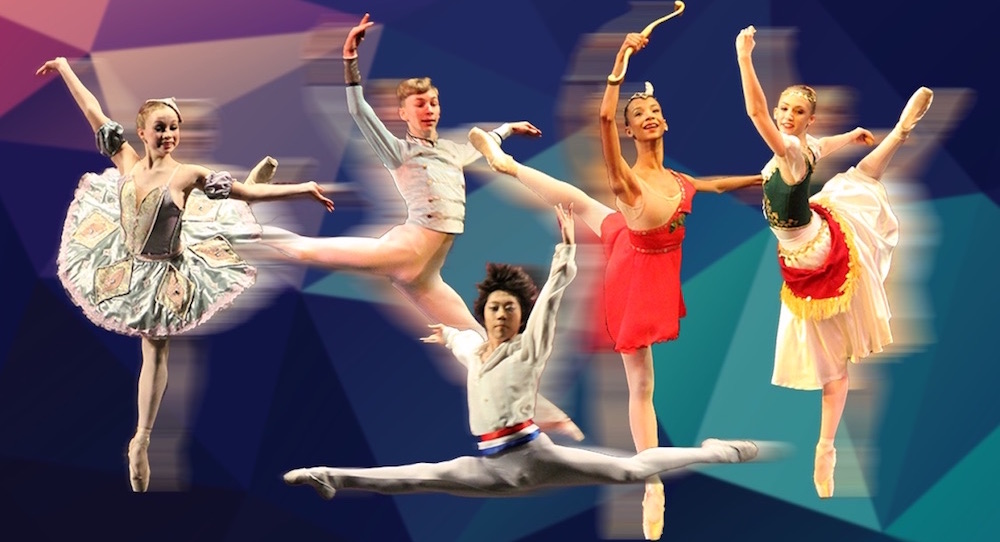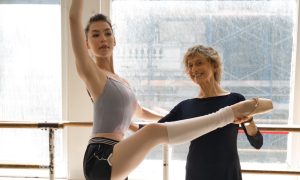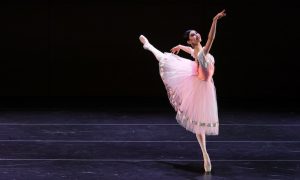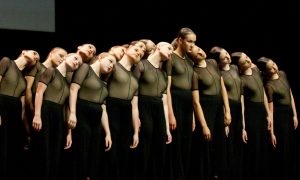When little ones in ballet slippers dream of one day taking the stage as Sugar Plum Fairy or the Cavalier, they have a beautiful innocence. The drive there can be what fuels the rise to a professional ballet career. Yet they’re not fully aware of the immense challenges involved with getting there – the countless hours in the studio, the big costs, the (despite the gains toward) risks to health and wellness. There are big ideas to grasp with as well – the true meanings of things like technique, virtuosity and artistry; one’s true identity as an artist and place in artistic legacy; and the best place and environment for one to thrive as an artist.
The Connecticut Classic is a ballet competition based in Connecticut, with a main competition weekend March 10-11, 2018, at the Warner Theatre in Torrington, CT. The mission is to facilitate that artistic journey, through opportunities to gain critique from top ballet professionals – and through that, for some contestants, be awarded ballet scholarships. This allows ballet students to continue study, without fear of financial burden – armed with useful critique, steps toward even larger opportunities and further molding of who they are as artists.

Justin Sherwood.
It all adds a bit of helpful practicality to the mix, while allowing ballet dreams of childhood to dance on. The competition is now also expanding to a second city, into a whole other region of the U.S. Another competition weekend will take place February 3-4, 2018, in Manassas, Virginia. With this bi-regional presence, the competition can reach new communities of dancers. To learn more about this expansion and the competition itself, Dance Informa turned to Justin Sherwood, co-director of The Connecticut Classic.
Congratulations on the expansion of The Connecticut Classic to a second city! What were the main factors behind the decision to expand? What new possibilities does this development offer, whether by assets of this new city or other factors?
“The idea behind The Connecticut Classic was to give classically trained students the opportunity to be adjudicated by top professionals and reward their work and dedication by offering summer ballet scholarships. Our goal is to reach as many talented dancers as possible and help them to realize their dreams of becoming professional dancers. Competing with their peers gives them a sense of what it takes to pursue this field.
Ballet training not only takes commitment, hard work and dedication; it is also expensive. By offering summer scholarships, we can help take some of the financial burden off parents and give students opportunities to broaden their education. We have decided to expand the competition to other cities to give more dancers this wonderful opportunity.”
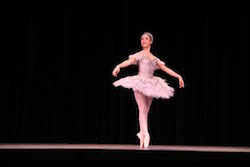
The Connecticut Classic.
There’s currently a discussion in the ballet world on the balance between virtuosity and artistry. How does The Connecticut Classic balance these aspects? Are there any indications of a shift in that dynamic with the development of adding a second city?
“Training students in classical ballet is focused on technique. Coaching students to perform classical variations gives the dancers a chance to develop their style and artistry. The combination of technique and artistry is what the judges look for in awarding scholarships.”
What, in short, does your competition look for the most in contestants? Are there variations in that with different ages, entrance levels and even judges? Do you anticipate any shifts in this aspect with this newest development of the competition?
“The Connecticut Classic focuses on classically trained dancers. We feel that these students need some recognition for the time, talent and work they put into honing their craft. Our competitors range in age from nine to 19, and we feel that learning and performing classical variations will give them the tools they need to develop their talent and prepare them to discover and broaden their abilities.
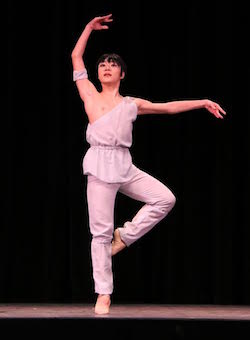
The Connecticut Classic.
The students need to perform a variation from our repertoire list. Students competing in the youth division may adapt the variation to their level of training. In the junior and senior divisions, they are judged on technique and artistry. The judges take age into consideration when adjudicating students.”
Is there anything else we should know about The Connecticut Classic?
“Because our competitors only compete in classical dance, we view our competition as an educational experience and a stepping stone to other international competitions. We try to educate students on what it takes to be a professional dancer by offering master classes, taught by our judges, and healthy dancer seminars for students and parents.”
For more information on The Connecticut Classic, visit theconnecticutclassic.com.
By Kathryn Boland of Dance Informa.


